This is an all-around project that encompassed multiple stages of design, development, and then delivery as the main instructor.
This is a certificate program for graduate students to prepare them for college teaching. The name of the program was Certificate in University Teaching for Ph.D. Students.

The main goal was to prepare students, whose main background is science and engineering research, to become aware of current teaching and learning principles and have the opportunity to go through applying these concepts during the time of the program.
The program ran for a whole 15-week semester and is scheduled to be recommended for all graduate students.
Design and Development
During the initial phase data was collected and program goals were identified. Based on the program goals received from stakeholders, course learning outcomes were written, revised, and then approved.
The adopted design approach was the backward design where we start with designing assessments based on outcomes, then select content and design activities.
Course Learning Outcomes Mapped to Assessments
- Discuss contemporary debates and pedagogical approaches within Higher Education
- Demonstrate sound ability to plan and lead student-centered learning activities
- Produce constructive evaluations of students’ work with both effective feedback and consistent grading practices
- Reflect upon personal values and beliefs about teaching and learning
- Incorporate digital learning tools to support the effective adoption of hybrid and online modes of course delivery
| Assessment | Weight | Course Learning Outcomes (CLOs) |
| Learning Principles Test | 5% | CLO1 |
| Teaching Observation | 25% | CLO2 – CLO3 |
| Reading Assignments | 10% | CLO1 – CLO4 |
| Discussion Questions | 10% | CLO1 – CLO2 – CLO3 – CLO4 – CLO5 |
| Journal Entries | 10% | CLO4 |
| Lesson Plan Assignment | 5% | CLO2 |
| Statement of Teaching Philosophy | 5% | CLO4 |
| Evaluation, Feedback, and Grading Test | 5% | CLO3 |
| LMS Capstone Project | 25% | CLO2 – CLO3 – CLO5 |
Course Units & Schedule
Course Design Highlights
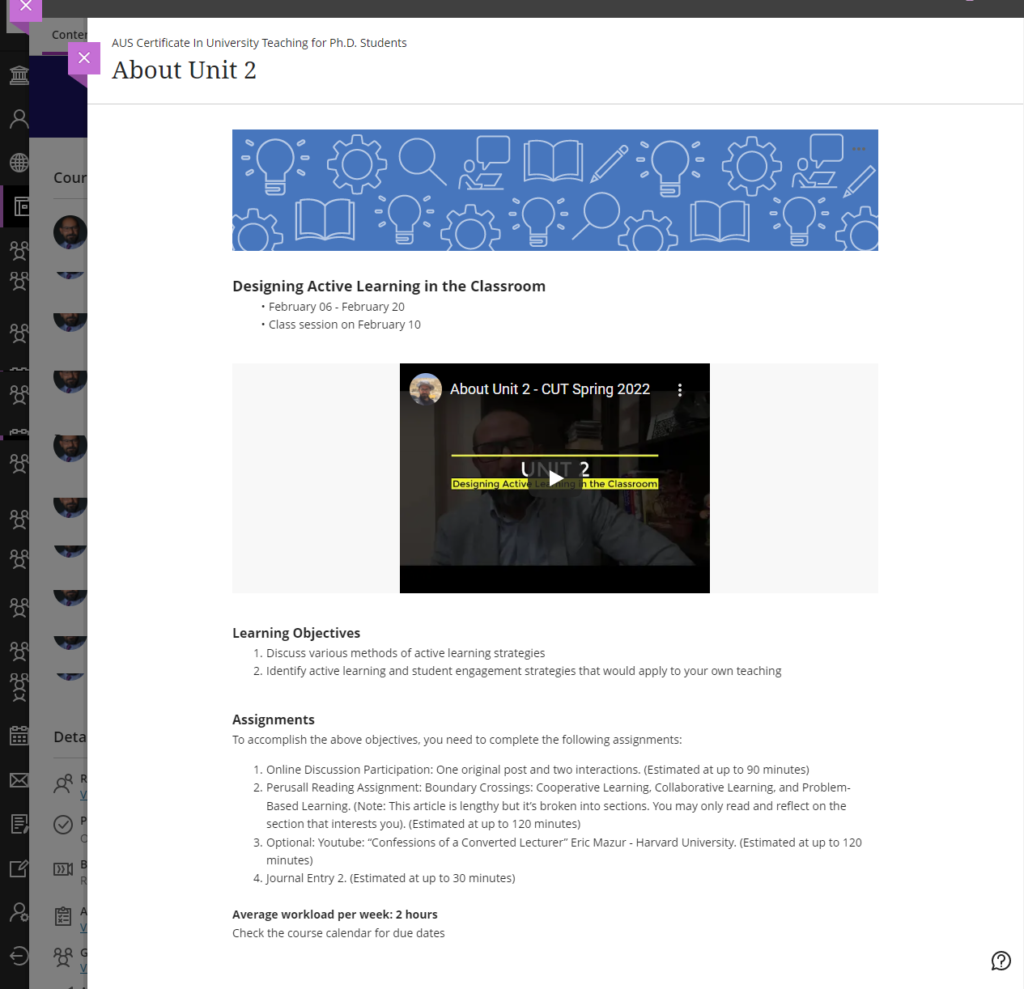
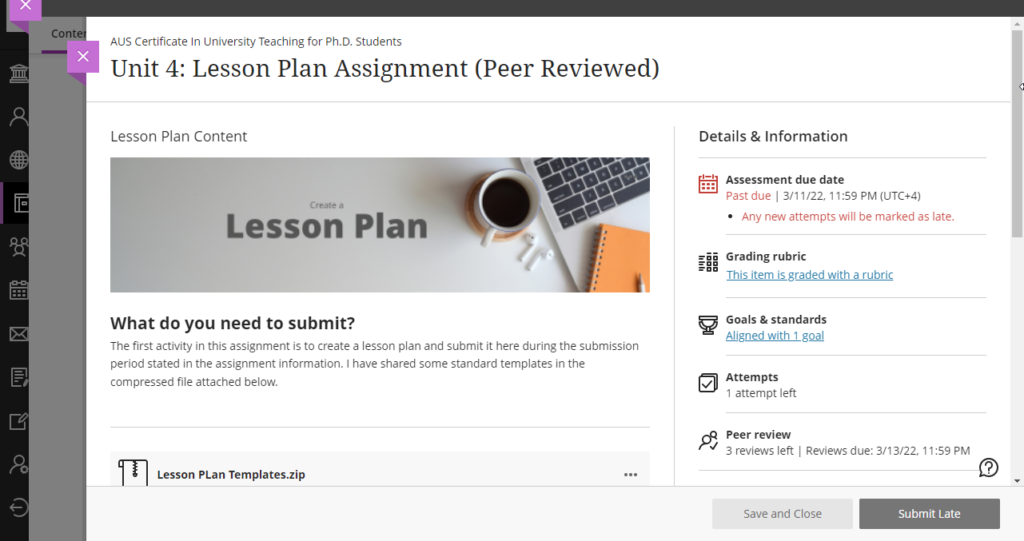
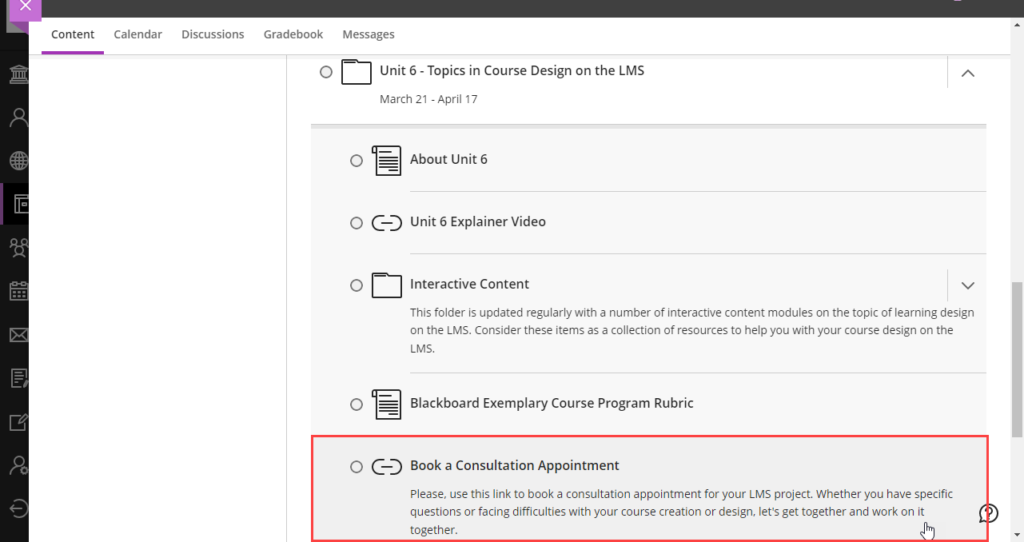
Implementation (Teaching the Course)
Since the course was delivered totally online with 6 times of synchronous online sessions, it was crucial to make sure that students have a strong connection to the course environment with a high level of interaction embedded in the course assessments. It was recognized that the instructor should engage with the content as much as it was expected from students.
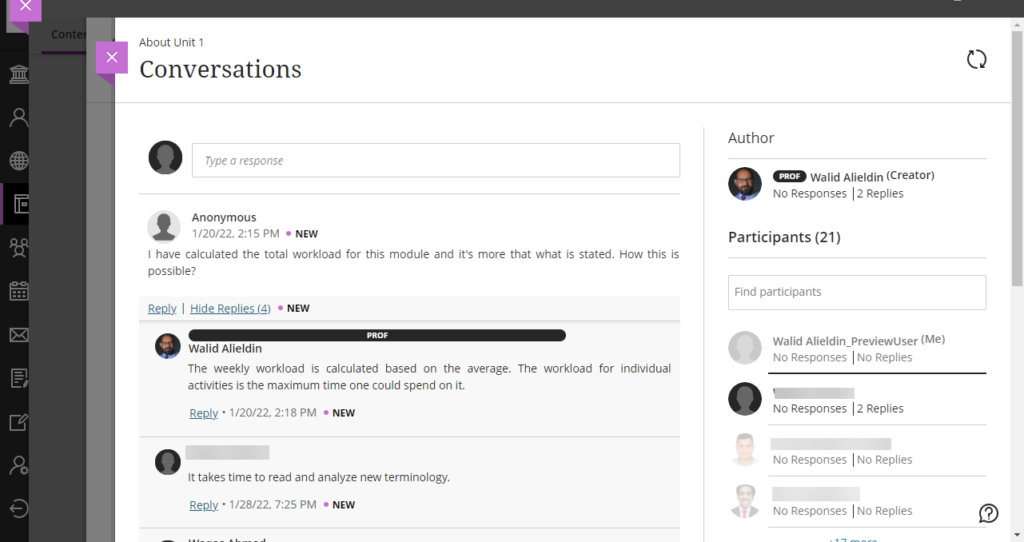
Managing Course Discussions
Discussions were required in every unit of the course and their questions dealt with points raised either in the readings or other assessments.
To highlight originality and variety of responses, posting first was required before reading other participants’ responses.
During the duration of the discussion forum, most of the time I went ahead and posted my contribution and an answer to the discussion question to encourage students to participate.
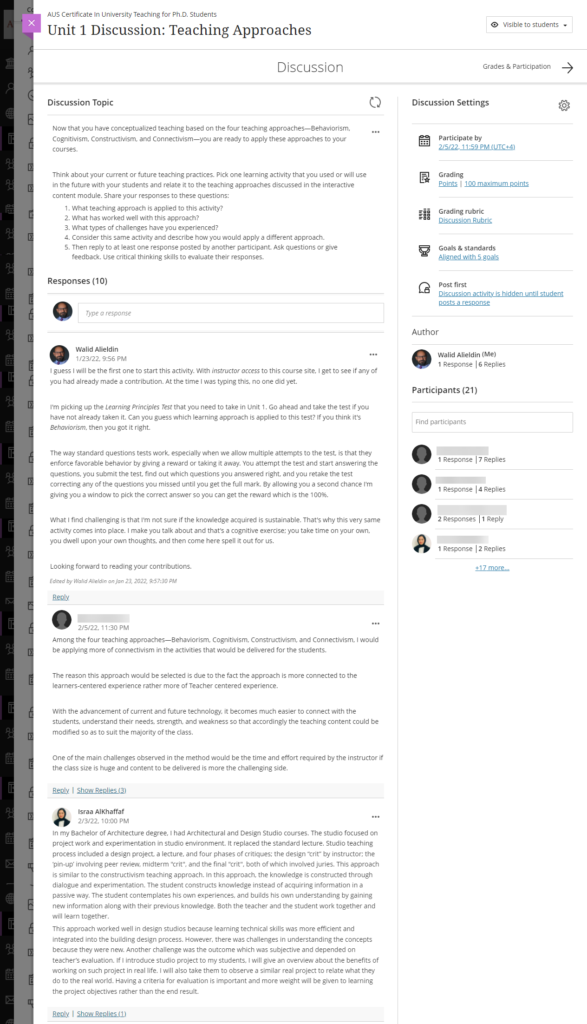
Managing Reading Assignments
IF you are teaching yourself, and like nearly all other teachers, you assign readings to your students. Many teachers that readings are rarely done and students will find a lot of alternatives to actually do the reading.
Even if they sat down and opened the book at the required chapter or section, they are passive readers. Conventional readings provide the least amount of interaction if not at all.

Perusall, which is a somewhat free tool for instructors, can turn readings into a social activity where students can share and comment on their annotations.
A powerful feature of Perusall is that it has its own grading engine that uses AI to determine the quantity and quality of students’ contributions. Perusall will then grade students’ contributions at the end of the activity cycle and send grades back to the LMS if integrated.